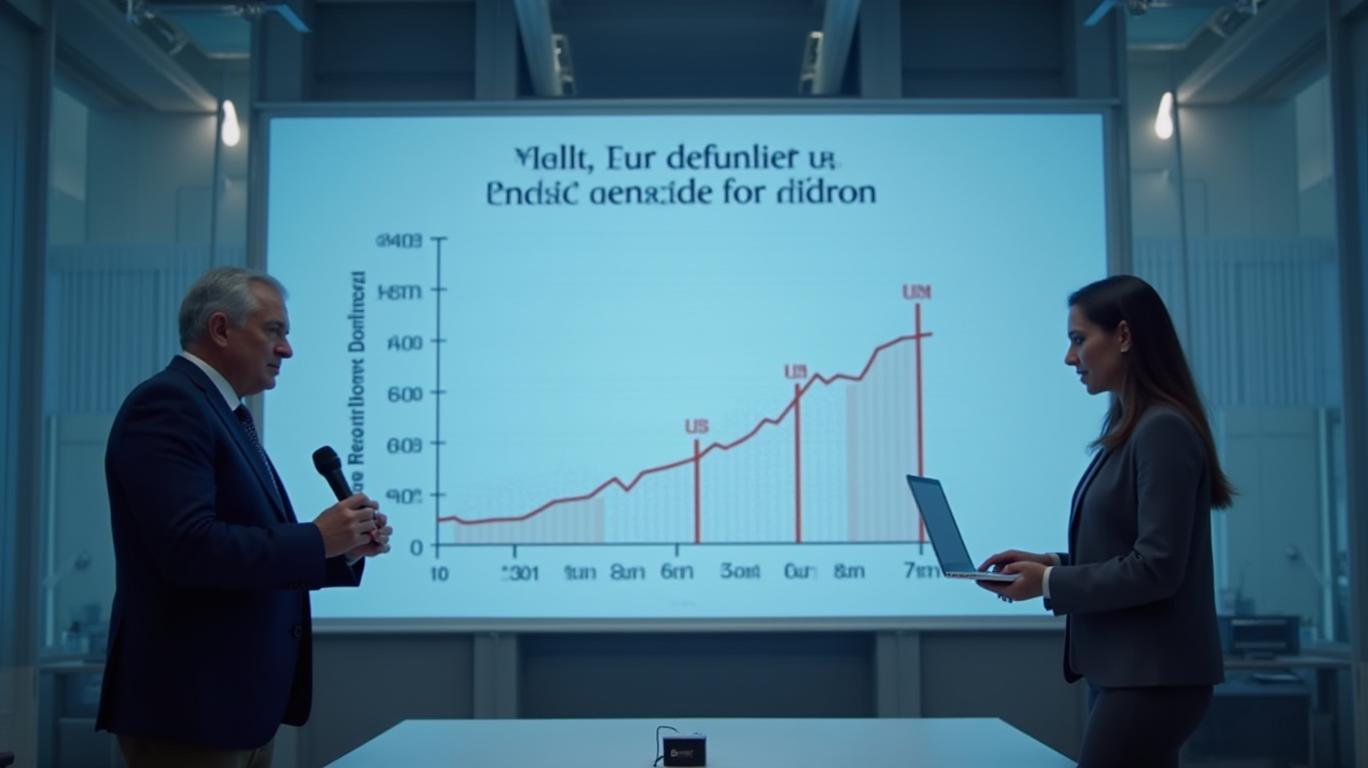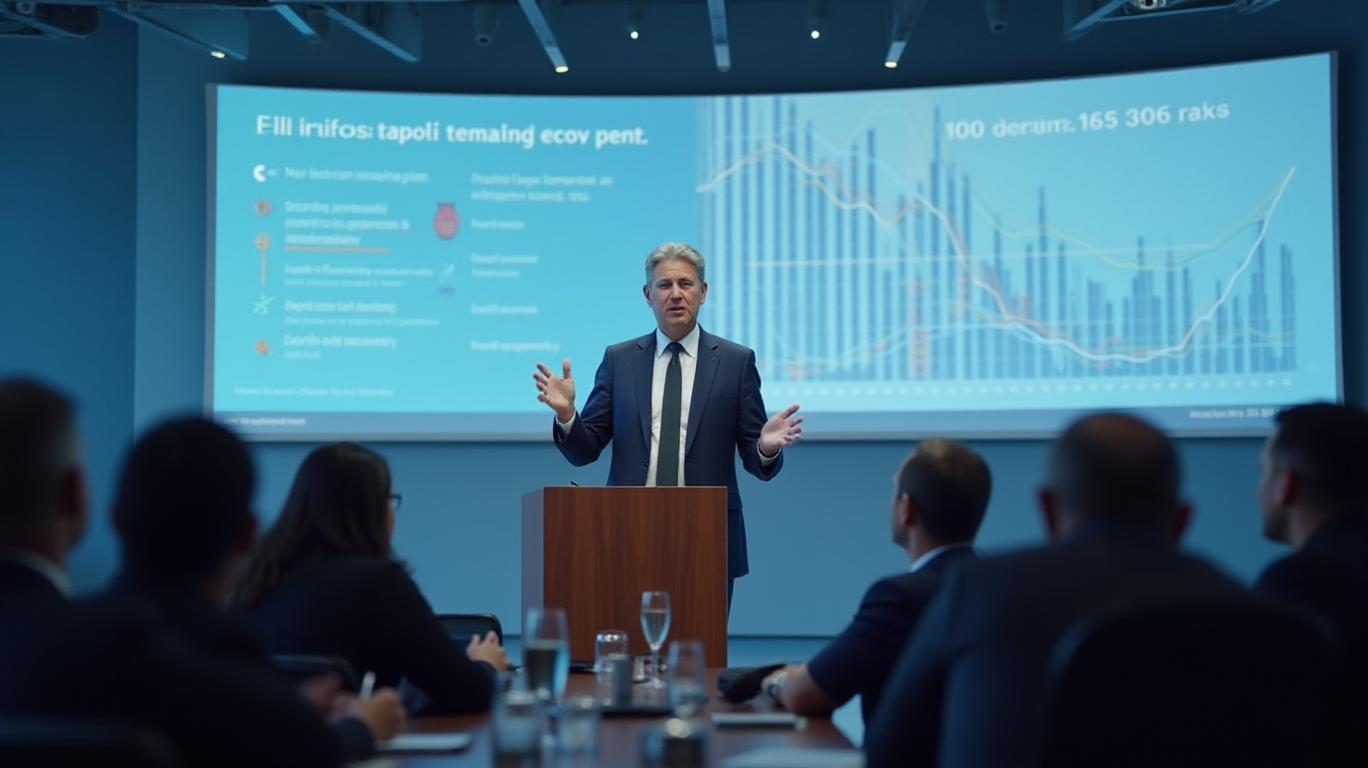Tariff-Driven Turbulence: GE Healthcare's Profit Forecast Cut Signals Broader Economic Risks
The healthcare sector, long considered a bastion of stability, is now grappling with the ripple effects of geopolitical tensions. GE Healthcare’s recent decision to slash its 2025 profit forecast—a direct consequence of lingering Trump-era tariffs—underscores a growing reality: even the most resilient industries are vulnerable to the vagaries of global trade policies. Let us dissect the implications for investors, the broader medtech sector, and the economy at large.
Ask Aime: How will GE Healthcare's profit forecast slash affect the healthcare sector and broader economy?

The Tariff Impact: Costs Escalate, Forecasts Retreat
GE Healthcare’s revised 2025 outlook paints a stark picture. The company now expects adjusted EPS of $3.90–$4.10, a steep drop from its earlier $4.61–$4.75 range. The culprit? Tariffs on Chinese imports and reciprocal U.S. levies, which ge healthcare estimates could add hundreds of millions in costs. While the 90-day tariff pause offers temporary relief, the threat of reinstatement looms large. CEO Peter Arduini’s acknowledgment of “ongoing uncertainty” reflects the tightrope companies walk between absorbing expenses and hiking prices—a decision that could alienate customers in a price-sensitive sector.
The market’s reaction has been mixed. Despite Q1’s strong revenue ($4.78 billion, up 2.7% YoY) and profit growth (5% rise in adjusted core profit to $715 million), investors appear skeptical. The stock’s 8% decline in 2025 to date suggests Wall Street is pricing in prolonged tariff-related headwinds.
Q1 Resilience Masks Long-Term Vulnerabilities
The first quarter’s outperformance—a 2%–3% organic revenue growth beat—highlights GE Healthcare’s operational strengths. Its diagnostics and imaging segments, particularly MRI and CT systems, remain critical to post-pandemic demand for elective procedures. However, the company’s reliance on China-sourced components, from sensors to plastics, leaves it exposed. Analysts estimate that tariffs could erode 2025 margins by up to 150 basis points.
Broader Industry Risks: The "Capex Recession" Looms
GE Healthcare’s struggles are not isolated. The medtech sector faces a perfect storm: tariff-driven inflation, supply chain bottlenecks, and delayed capital expenditures (capex) by hospitals and labs. The latter is particularly worrying. With businesses postponing investments due to cost pressures, a "capex recession" could crimp revenue growth for years.
GE’s Aerospace division, which shares similar tariff challenges, plans to offset up to $500 million in costs through price hikes and supply chain reconfigurations. But healthcare’s price-sensitive customers—hospitals, insurers, and governments—may resist similar moves, leaving margins under siege.
A comparison with industry peers reveals a concerning trend: while the sector’s average organic growth is projected at 3%–4%, GE Healthcare’s 2%–3% guidance lags, signaling its heightened exposure to tariff-related drag.
Conclusion: Navigating Uncertainty Requires Precision
GE Healthcare’s revised forecast is a cautionary tale for investors. The company’s efforts to restructure supply chains and negotiate contracts are commendable, but they cannot fully insulate it from external shocks. Key data points reinforce this:
- Margin Pressure: Tariffs could reduce 2025 EPS by ~$0.60–$0.75 versus prior guidance, a 15% drop.
- Geopolitical Risk: 40% of GE Healthcare’s China-sourced materials face tariffs, with no clear resolution in sight.
- Sector-Wide Threats: A potential capex recession could cut industry revenue growth by 1–2%, exacerbating margin challenges.
For now, the stock’s valuation—trading at 14x 2025 EPS estimates—reflects this uncertainty. Investors must weigh GE Healthcare’s technological moats (e.g., its leadership in MRI and digital health platforms) against the escalating macro risks. A resolution to trade disputes—or at least a prolonged pause—could unlock upside. Until then, the company’s tale is a reminder: in today’s economy, no sector is immune to the geopolitical currents.


_cbf77e8c1748017079428.jpeg)






